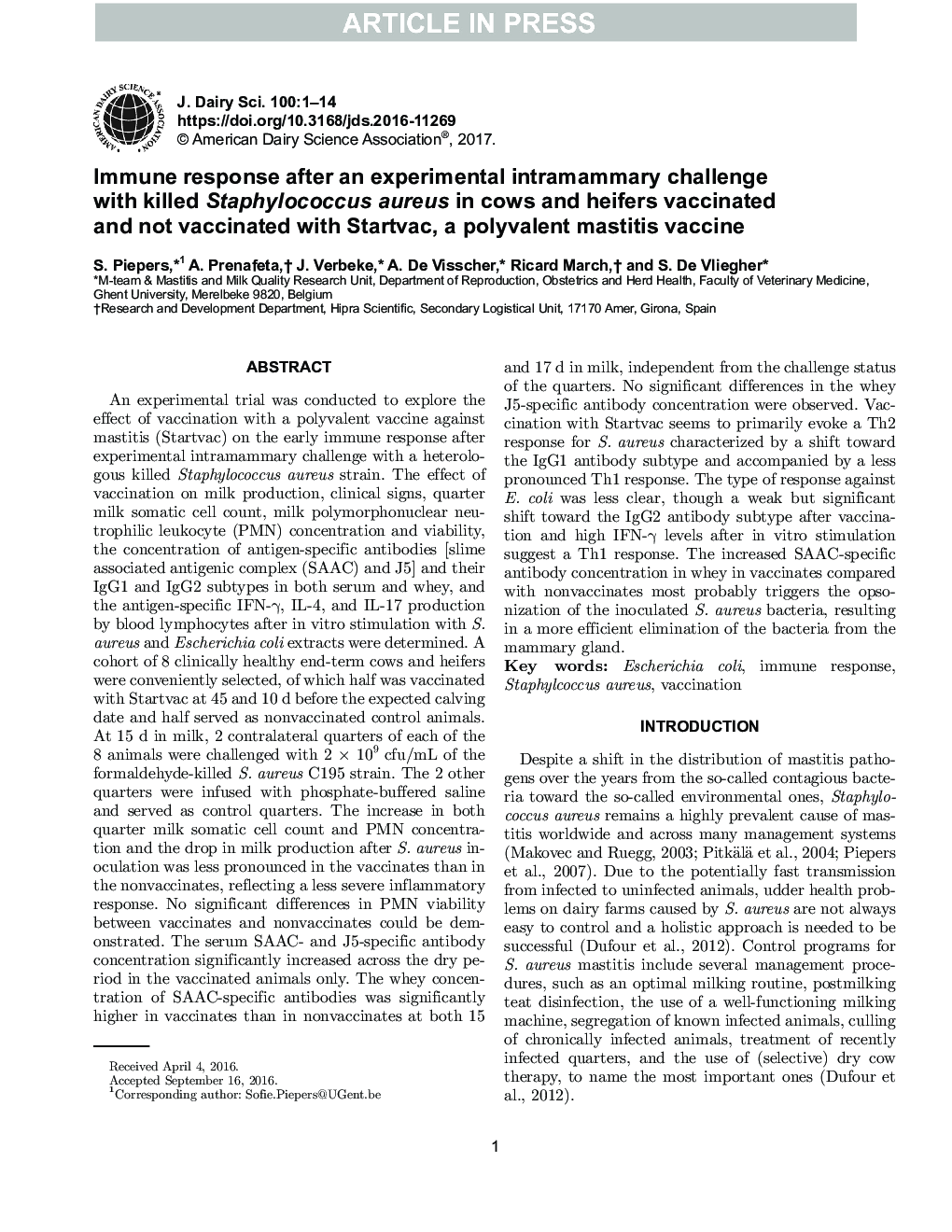| Article ID | Journal | Published Year | Pages | File Type |
|---|---|---|---|---|
| 5542613 | Journal of Dairy Science | 2017 | 14 Pages |
Abstract
An experimental trial was conducted to explore the effect of vaccination with a polyvalent vaccine against mastitis (Startvac) on the early immune response after experimental intramammary challenge with a heterologous killed Staphylococcus aureus strain. The effect of vaccination on milk production, clinical signs, quarter milk somatic cell count, milk polymorphonuclear neutrophilic leukocyte (PMN) concentration and viability, the concentration of antigen-specific antibodies [slime associated antigenic complex (SAAC) and J5] and their IgG1 and IgG2 subtypes in both serum and whey, and the antigen-specific IFN-γ, IL-4, and IL-17 production by blood lymphocytes after in vitro stimulation with S. aureus and Escherichia coli extracts were determined. A cohort of 8 clinically healthy end-term cows and heifers were conveniently selected, of which half was vaccinated with Startvac at 45 and 10 d before the expected calving date and half served as nonvaccinated control animals. At 15 d in milk, 2 contralateral quarters of each of the 8 animals were challenged with 2 Ã 109 cfu/mL of the formaldehyde-killed S. aureusC195strain. The 2 other quarters were infused with phosphate-buffered saline and served as control quarters. The increase in both quarter milk somatic cell count and PMN concentration and the drop in milk production after S. aureus inoculation was less pronounced in the vaccinates than in the nonvaccinates, reflecting a less severe inflammatory response. No significant differences in PMN viability between vaccinates and nonvaccinates could be demonstrated. The serum SAAC- and J5-specific antibody concentration significantly increased across the dry period in the vaccinated animals only. The whey concentration of SAAC-specific antibodies was significantly higher in vaccinates than in nonvaccinates at both 15 and 17 d in milk, independent from the challenge status of the quarters. No significant differences in the whey J5-specific antibody concentration were observed. Vaccination with Startvac seems to primarily evoke a Th2 response for S. aureus characterized by a shift toward the IgG1 antibody subtype and accompanied by a less pronounced Th1 response. The type of response against E. coli was less clear, though a weak but significant shift toward the IgG2 antibody subtype after vaccination and high IFN-γ levels after in vitro stimulation suggest a Th1 response. The increased SAAC-specific antibody concentration in whey in vaccinates compared with nonvaccinates most probably triggers the opsonization of the inoculated S. aureus bacteria, resulting in a more efficient elimination of the bacteria from the mammary gland.
Related Topics
Life Sciences
Agricultural and Biological Sciences
Animal Science and Zoology
Authors
S. Piepers, A. Prenafeta, J. Verbeke, A. De Visscher, Ricard March, S. De Vliegher,
